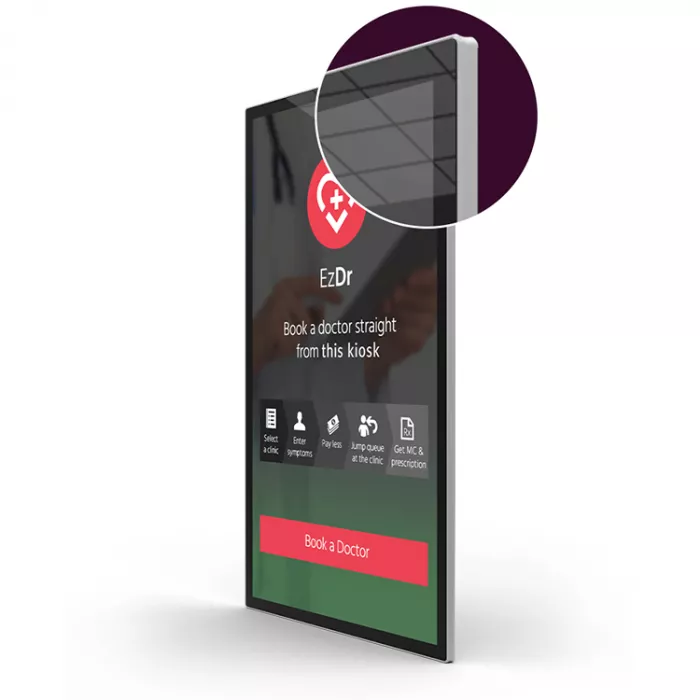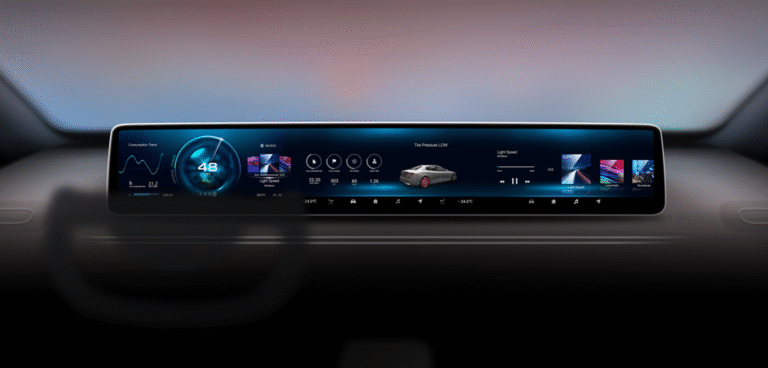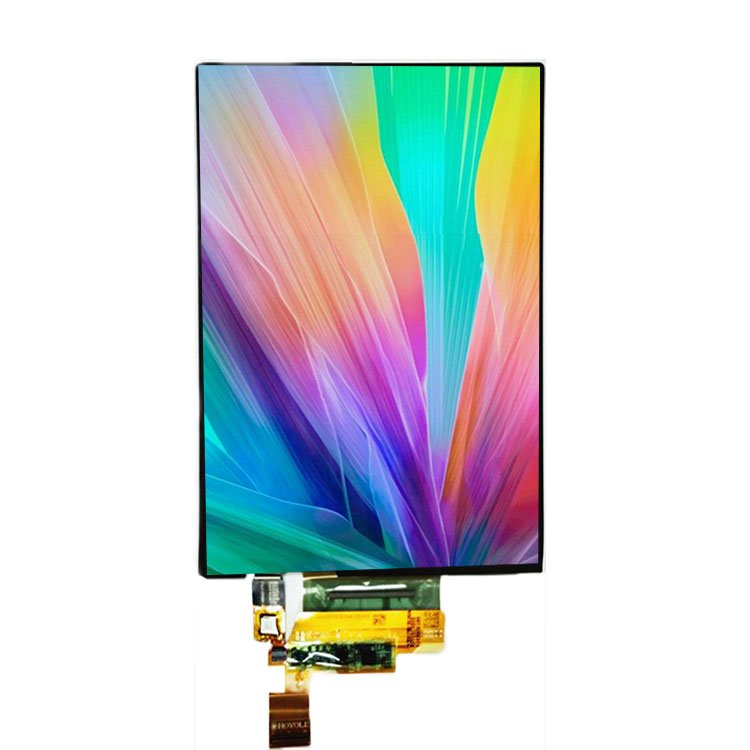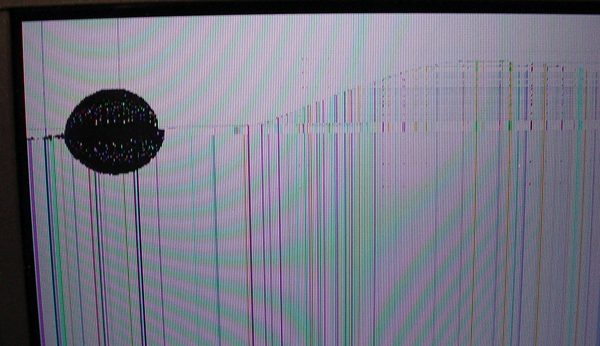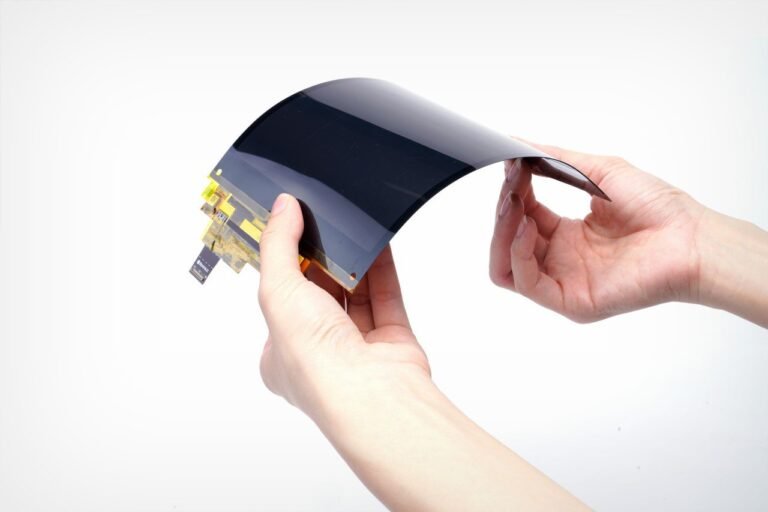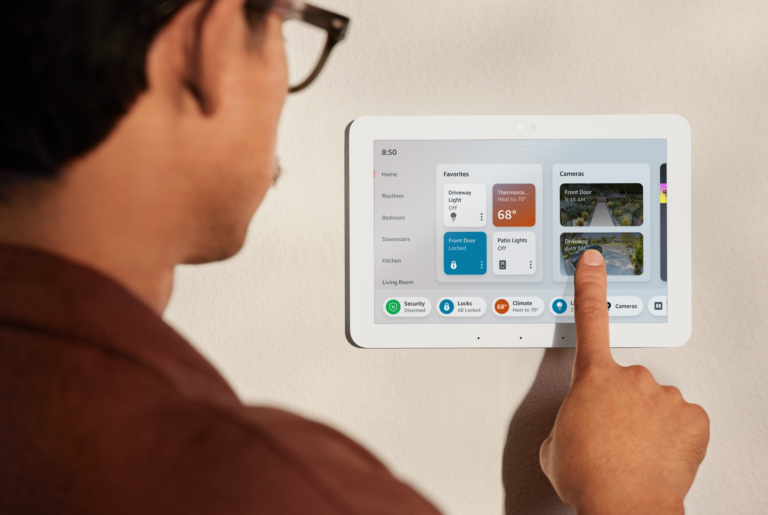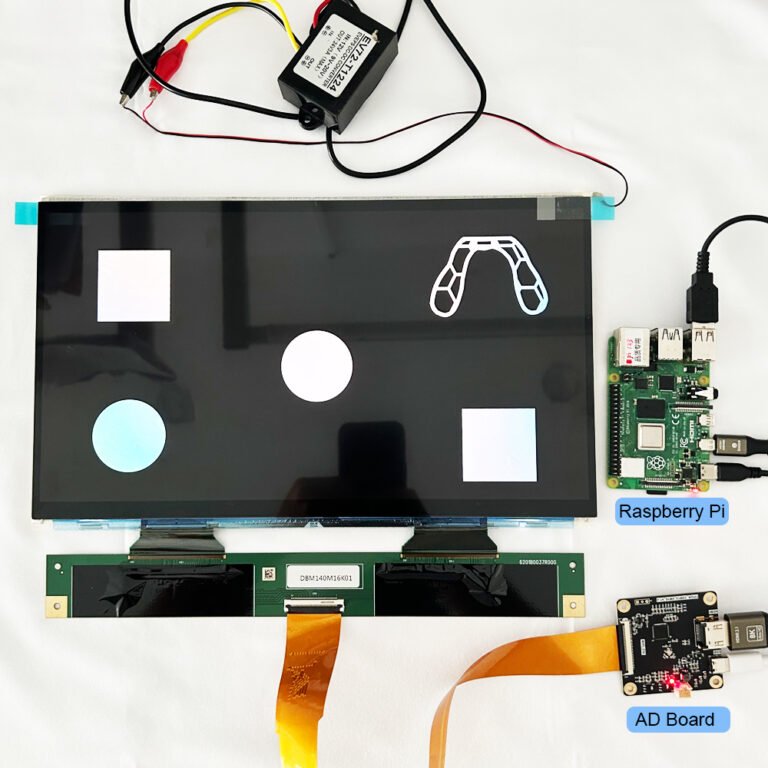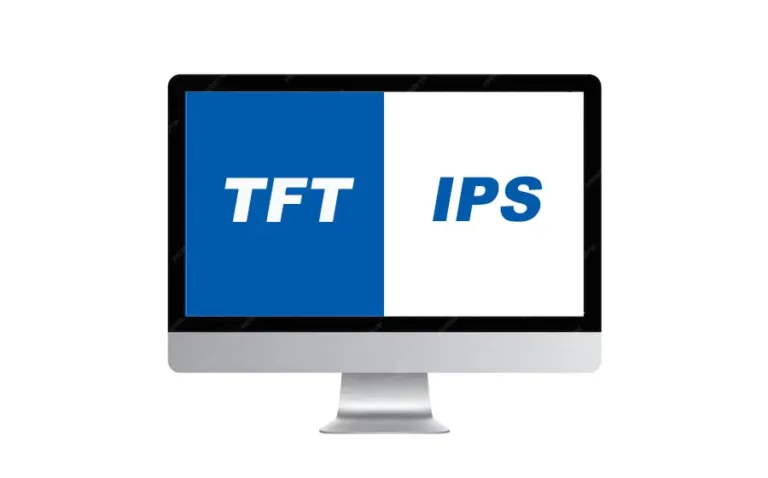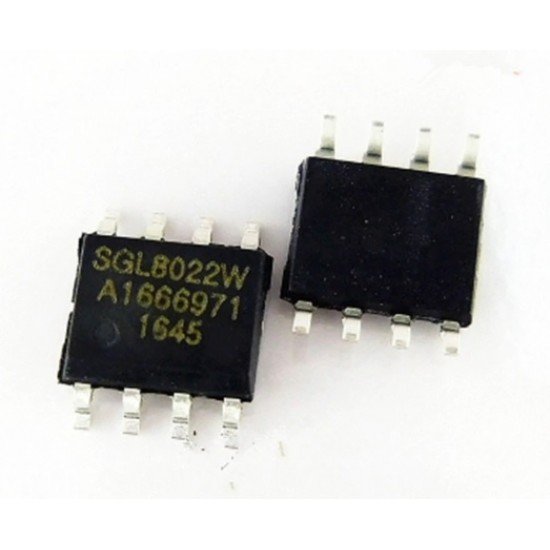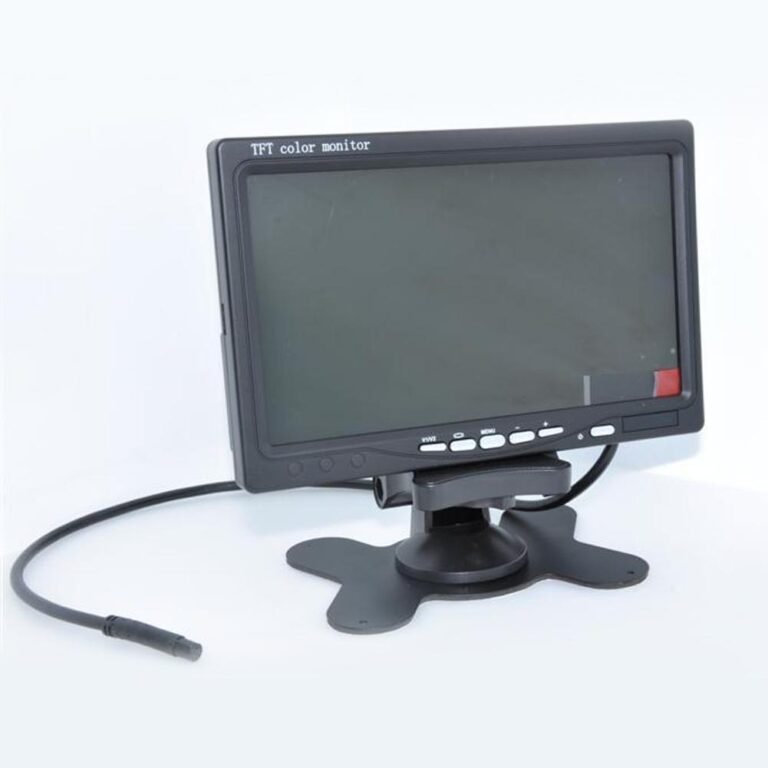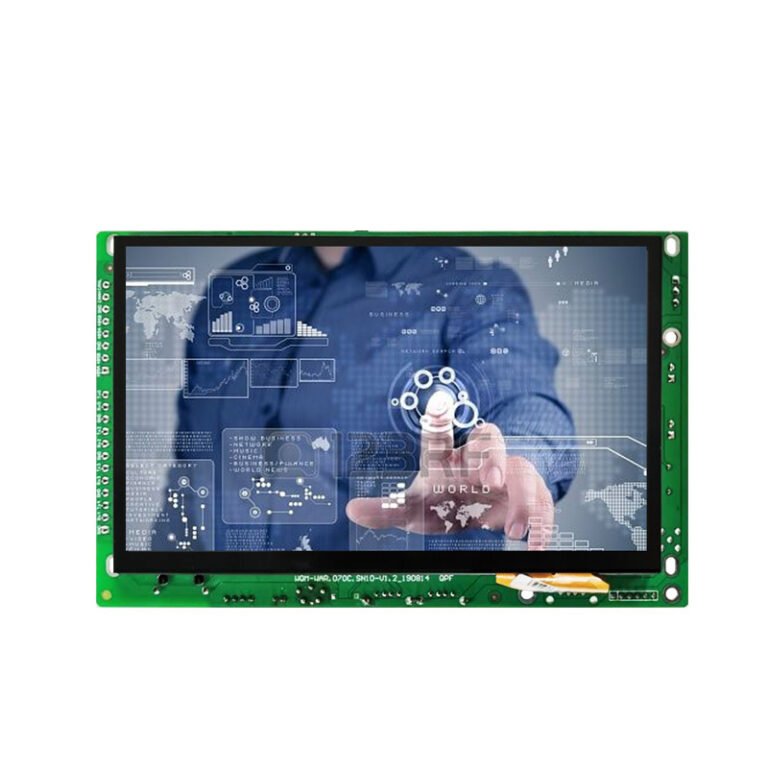Was ist ein PCAP-Touchscreen?
A PCAP-Touchscreen ist ein Display, das Touch-Eingaben mittels projiziert kapazitiver Abtastungerkennt. Die Technologie beinhaltet die Integration eines transparenten Gitters aus leitfähigem Material (häufig Indiumzinnoxid, ITO) in die Glasoberfläche.
Wenn ein Finger – oder ein leitfähiges Objekt wie ein Stift – die Oberfläche berührt, stört dies das elektrostatische Feld, wodurch das System die exakte Berührungsposition berechnen kann. Im Gegensatz zu älteren Technologien kann PCAP:
- Mehrfinger-Gesten Multi-Touch-Gesten wie Zwei-Finger-Zoom oder Rotation erkennen.
- Mit dünnen Glas- oder Kunststoffabdeckungenarbeiten, was es äußerst langlebig macht.
- Schnelle Reaktionszeiten für ein nahtloses Nutzererlebnis bieten.
Wie funktioniert PCAP-Touch-Technologie?
Das Funktionsprinzip von PCAP-Touchscreens lässt sich in mehrere Schritte unterteilen:
- Erstellung des leitfähigen Gitters – Ein transparentes leitfähiges Material bildet Reihen und Spalten von Elektroden.
- Projektion des elektrostatischen Felds – Ein konstantes elektrostatisches Feld wird durch die Glasoberfläche projiziert.
- Berührungserkennung – Wenn sich ein Finger nähert, verursacht dies eine Kapazitätsänderung an dieser spezifischen Position.
- Signalverarbeitung – Die Steuerplatine interpretiert diese Änderung und wandelt sie in präzise Koordinaten um.
- Softwareintegration – Das Betriebssystem verarbeitet diese Koordinaten zu Nutzerinteraktionen wie Tippen, Wischen und Gesten.
Dieser Prozess erfolgt in Millisekunden und bietet Nutzern eine natürliche, intuitive und reaktionsschnelle Touch-Erfahrung..
Hauptvorteile der PCAP-Touchscreen-Technologie
Die Beliebtheit von PCAP-Touchscreens wird durch ihre Fähigkeit getrieben, ältere Technologien zu übertreffen. Zu den Hauptvorteilen zählen:
- Multi-Touch-Fähigkeit – Unterstützt bis zu 10 oder mehr Berührungspunkte, ermöglicht erweiterte Gestensteuerung.
- Dauerhaftigkeit – Widerstandsfähig gegen Kratzer, Stöße und langfristigen Verschleiß durch gehärtete Glaskonstruktion.
- Hohe optische Klarheit – Transparente leitfähige Materialien gewährleisten minimalen Lichtverlust und liefern lebendige Visuals.
- Präzision und Genauigkeit – Kann selbst feine Berührungen oder Stifteingaben mit hoher Auflösung erfassen.
- Betrieb mit Wasser und Handschuhen – Fortgeschrittene PCAP-Systeme funktionieren unter Wassertropfen oder mit Handschuhberührungen, ideal für industrielle und medizinische Anwendungen.
- Schlankes Design – Ermöglicht schlanke Rahmen und moderne Geräteästhetik.
- Lange Lebensdauer – Im Gegensatz zu resistiven Screens hat PCAP keine beweglichen Teile, was die Ausfallrate reduziert.
PCAP-Touchscreen vs. Resistiver Touchscreen
| Merkmal | PCAP-Touchscreen | Resistiver Touchscreen |
|---|---|---|
| Berührungserkennung | Kapazitive Abtastung | Druckbasiert |
| Multi-Touch-Unterstützung | Ja, bis zu 10+ Punkte | Nein, nur Einzel- oder Doppelberührung |
| Dauerhaftigkeit | Kratzfest, lange Lebensdauer | Anfälliger für Verschleiß und Beschädigung |
| Klarheit | Hoch, >90% Transparenz | Geringer, aufgrund mehrerer Schichten |
| Eingabemethode | Finger, leitfähiger Stift, Handschuh (speziell ausgelegt) | Beliebiges Objekt (Finger, Stift, Handschuh) |
| Kosten | Höhere Anfangsinvestition | Geringere Anschaffungskosten |
| Benutzererfahrung | Schnelle, flüssige, moderne Oberfläche | Langsamer, weniger intuitiv |
Klar ist, dass PCAP-Touchscreens eine überlegene Leistung für die meisten modernen Anwendungen bieten, auch wenn resistiver Touch nach wie vor seine Nische hat, wo Kosten oder Robustheit im Vordergrund stehen.
Anwendungen von PCAP-Touchscreens
Unterhaltungselektronik
Smartphones und Tablets sind die häufigsten Beispiele für den Einsatz von PCAP. Ihre nahtlosen, flüssigen Interaktionen setzen den Maßstab für alle anderen Geräte.
Einzelhandel und Selbstbedienungsterminals
Interaktive Kioske, digitale Beschilderung und Verkaufsautomaten setzen auf PCAP-Technologie für schnelles, intuitives Kundenengagement.
Industrielle HMI-Systeme
In Fabriken und Produktionsumgebungen bieten robuste PCAP-Bildschirme Betreibern zuverlässige Leistung mit Handschuhbedienung.
Medizinische Geräte
Krankenhäuser und Kliniken setzen PCAP-Bildschirme in Diagnosegeräten und Patientenumgebungssystemen ein, aufgrund ihrer hohen Hygienekompatibilität und Beständigkeit gegen häufige Reinigung.
Automobil-Displays
Infotainmentsysteme und Armaturenbrettsteuerungen in modernen Fahrzeugen setzen zunehmend auf PCAP-Displays aufgrund ihrer eleganten Designs und reaktionsschnellen Gesten.
Bankwesen und Geldautomaten
Moderne Geldautomaten und Finanzterminals verwenden PCAP-Bildschirme, um die Benutzerfreundlichkeit zu verbessern, die Wartung zu reduzieren und die Haltbarkeit im Vergleich zur resistiven Technologie zu erhöhen.
Herausforderungen bei der Implementierung von PCAP-Touchscreens
Trotz ihrer vielen Vorteile ist die PCAP-Technologie nicht ohne Einschränkungen:
- Höhere Kosten – Teurer als resistive Panels, was die Einführung in kostengünstigen Anwendungen limitieren kann.
- Umgebungsempfindlichkeit – Extreme Umgebungen (Staub, Wasser oder elektromagnetische Störungen) können die Leistung beeinträchtigen.
- Handschuhkompatibilität – Während fortschrittliche PCAP-Technologie Handschuhgebrauch unterstützt, können günstigere Versionen dies nicht.
- Komplexe Integration – Erfordert präzise Kalibrierung und qualitativ hochwertige Controller-Boards, um die Leistung zu gewährleisten.
Zukünftige Trends in der PCAP-Touchscreen-Technologie
Die Zukunft von PCAP-Touchscreens ist vielversprechend, wobei Innovationen die Technologie vielseitiger machen:
- Flexible PCAP-Displays – Integration in gebogene oder faltbare Oberflächen.
- Haptische Feedback-Integration – Simulation taktiler Empfindungen für verbesserte Interaktion.
- Kantenlose Glas-Designs – Ultradünne Ränder für hochwertige Ästhetik.
- KI-verbesserte Touch-Erkennung – Unterscheidung zwischen beabsichtigten und versehentlichen Berührungen.
- Verbesserte Energieeffizienz – Reduzierung des Stromverbrauchs für längere Akkulaufzeit in mobilen Geräten.
- Außenlesbare Displays – Bessere Helligkeit und Blendeschutzfunktionen für öffentliche Kioske und Fahrzeuge.
Warum mit einem PCAP-Touchscreen-Lösungsanbieter zusammenarbeiten?
Bei der Implementierung von PCAP-Technologie in industriellen oder kommerziellen Produkten ist die Auswahl des richtigen Partners entscheidend. Ein erfahrener Lösungsanbieter bietet:
- Rundum-Service – Von PCAP-Panels über Controller-Boards, Kabel bis hin zu integrierten Display-Modulen.
- Personalisierung – Maßgeschneiderte Lösungen in Größe, Auflösung, Touch-Empfindlichkeit und Glasstärke.
- Zertifizierungen – Einhaltung von ISO, CE, RoHS und anderen globalen Standards.
- Skalierbarkeit – Fähigkeit zur Lieferung sowohl kleiner Prototypenchargen als auch großer Produktionsserien.
- After-Sales-Support – Beratung, Fehlerbehebung und Produktlebenszyklus-Management.
Solche Partnerschaften gewährleisten nicht nur hochwertige Hardware sondern auch Systemoptimierung für maximale Leistung.
Fazit: Die Rolle von PCAP in der Zukunft von Displays
Von Smartphones bis hin zu industriellen Steuerungssystemen, PCAP-Touchscreens definieren die Mensch-Maschine-Interaktion neu. Deren Multitouch-Fähigkeit, Haltbarkeit, Präzision und elegante Ästhetik machen sie zur bevorzugten Technologie für Branchen, die intuitive, zuverlässige und zukunftssichere Schnittstellen benötigen.
Da Innovationen wie flexible Panels, Haptik und KI-gestützte Erkennung voranschreiten, wird PCAP an der Spitze der Displaytechnologie bleiben. Unternehmen, die jetzt PCAP-Lösungen einsetzen, sind besser positioniert, um moderne Benutzererfahrungen zu liefern, Wartungsrisiken zu reduzieren und die Wettbewerbsfähigkeit zu steigern..
Für Unternehmen, die einen zuverlässigen Partner für PCAP-Touchscreen-Lösungen suchen, ist die Wahl klar: Investieren Sie in einen Technologieanbieter, der Individualisierung, Qualität und End-to-End-Support vereint..


